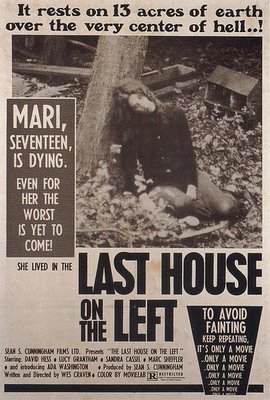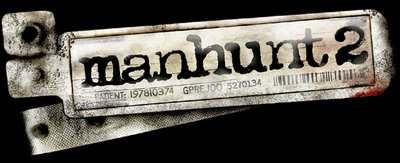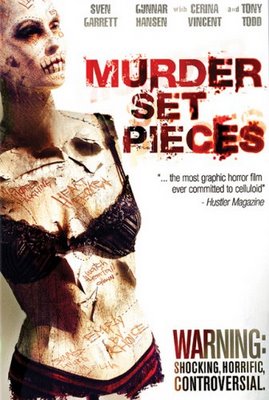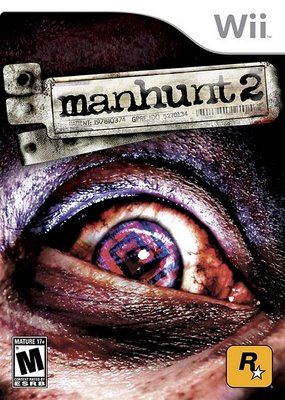 Glory of glories, the Byron report has finally arrived (PDF). For the last couple of months, any mention of the internet or video games in the negative in parliament has been met with a "wait for the Byron report" with the implication being that any changes will be based on its recommendations. Indeed, the government has been so pleased with Dr Tanya Byron's report that it's pledged to implement its proposals in full. Perhaps that's what all the worthy reports written for government that never get read even by the ministers they're meant for need - a TV personality to have been in some way associated with them. Jamie Oliver, Tanya Byron, they call and Labour heels. Those academics that are unfortunate enough to be untelegenic need to get someone who's appeared on the box to helm their report and make sure it's heard. Coming soon, the sunbed review (not made up) by Dale Winton, alongside the report into Travellers' communities, with an introduction by Basil Brush. Boom boom!
Glory of glories, the Byron report has finally arrived (PDF). For the last couple of months, any mention of the internet or video games in the negative in parliament has been met with a "wait for the Byron report" with the implication being that any changes will be based on its recommendations. Indeed, the government has been so pleased with Dr Tanya Byron's report that it's pledged to implement its proposals in full. Perhaps that's what all the worthy reports written for government that never get read even by the ministers they're meant for need - a TV personality to have been in some way associated with them. Jamie Oliver, Tanya Byron, they call and Labour heels. Those academics that are unfortunate enough to be untelegenic need to get someone who's appeared on the box to helm their report and make sure it's heard. Coming soon, the sunbed review (not made up) by Dale Winton, alongside the report into Travellers' communities, with an introduction by Basil Brush. Boom boom!
For some reason it inordinately bugs me that someone that the Dear Leader might have seen a couple of times on television giving advice on child behaviour is deemed the right person to write what is such an important report, not because of the effects it will have on the children's access to the internet and video games, but rather because of the effects it will have on all of our access to the internet and video games. There's never been a debate or to put it more accurately, a panic about what our children are up to which hasn't in some way then inhibited what adults themselves are able to choose to do with their time. Byron is, unlike some of her television counterparts who have over-egged or even lied about their actual qualifications, certainly both a doctor and something approaching an expert on child behaviour and mental health, but what she most certainly is not is anything like an expert on the internet and video games themselves, which is why the report ought to have been shared between her and some individuals who are, regardless of the assistance she's had in writing the report and in the research conducted which accompanies it.
It's therefore something of a relief that for the most part, with a few notable exceptions, the report is generally level-headed and thoughtful about children interacting online and also about the games that they play. It will most certainly not please or in any way help the lobby including Julian Brazier or Keith Vaz that want to further restrict access to video games, films and "potentially harmful" content on the internet. Byron's main proposal on video games and the certification of them is that the BBFC and PEGI, the currently opposing classification systems, should be working together towards an online rating system for internet games, while the BBFC should have to classify all games that contain content that is only suitable for those over 12, which can currently be contained under the PEGI system, although increasingly, as the industry has responded to parental concern, more and more games are being submitted for classification, whether they contain any content unsuitable for those under 12 or not. Even some of this shows however that Byron doesn't seem to have properly done her homework - she says that the BBFC logos should always be on the front of game boxes, but this has always been the case, and they're also usually far larger than their equivalent logos on DVD cases, to emphasise the point and make clear to parents the age restriction on the games. Then there are statements like this:
For example, 52% of respondents to a recent survey said they knowingly or deliberately purchased a game for their child, which according to the rating given, was not suitable for their age (ELSPA/YouGov 2007). This urgently needs to be addressed.
Why? Are those respondents not responsible for the children they buy the game for? If they knowingly or deliberately buy an 18-rated game for their children, then they obviously know it isn't necessarily going to be suitable for them, but they're either willing to take the risk or in fact think their children are mature enough to play such a game. This is hardly something the government should be interfering with.
Quite why Byron thinks the current classification system needs to be changed at all isn't clear. Her criteria for children and parents to be able to make sensible and informed decisions about the games they play means that any ratings systems must include the following elements:
clear age ratings;
clear accompanying descriptors which explain game content;
trustworthy;
enforceable where there are risks of potential harm
The current system is all of these things. Why then does it need to be meddled with, other than to do something for doing's sake? The BBFC, incidentally, has responded to the report here.
Going back to her proposals on the internet itself, this is apparently one of her three strategic objectives for child safety on the internet:
However, the majority of material accessed by internet users is hosted on a relatively small number of highly popular sites, the rest of it occupying a ‘long tail’ of less popular material. This means that we should focus our efforts on reducing the availability of harmful and inappropriate material in the most popular part of the internet.
No, it's not your or the government's job to be reducing the availability of "harmful and inappropriate material" from any part of the internet, let alone the most popular part. If material isn't illegal, then it's none of your or anyone else's businesses where that material is or isn't hosted. It's down to the parents to ensure that their children either don't have access to such material or that their children are able to deal with such content properly. These are, to be fair, Byron's second and third objectives, but that doesn't even begin to make up for the wrongness of the first.
Byron's proposals for delivering these three strategic objectives are:
A UK Council on Child Internet Safety, established by and reporting to the Prime Minister.
That this Council should lead the development of a strategy with two core elements: better regulation – in the form, wherever possible, of voluntary codes of practice that industry can sign up to – and better information and education, where the role of government, law enforcement, schools and children’s services will be key.
That the Home Office and DCSF should chair the Council, with the roles of other Government departments, especially DCMS, properly reflected in working arrangements.
That the Council should have a properly resourced cross-government secretariat to secure a joined-up Government approach to children and young peoples’ safety online.
That the Council should appoint an advisory group, with expertise in technology and child development, should listen to the voices of children, young people and parents and should have a sustained and rolling research programme to inform delivery.
All of which are decent, sound suggestions. Of concern however is just what the council itself might subsequently propose, especially on one issue of concern that Byron herself highlights:
The Council investigates where the law around harmful and inappropriate material could be usefully clarified (including suicide websites) and explores appropriate enforcement responses.
Suicide is not illegal. Providing advice on how you might kill yourself is not illegal. Aiding and abetting suicide is. Some might disagree on whether either of the first two should be, but while that is still the situation websites that provide advice for those who wish to end their lives should not be made in any way illegal.
One of the "sites" that is often mentioned when discussing websites that discuss suicide is alt.suicide.holiday, a Usenet newsgroup that has been linked to a number of individuals who have subsequently killed themselves, including at least a couple in this country. Far from the impression some may have, if the group hasn't changed much since I previously lurked in it a few years' back, most of group were individuals who had been suicidally depressed for a long period of time, who had sought help and in some cases gone from medication to medication and treatment to treatment without getting better, some even undergoing ECT, and most of whom sought the comfort of being in a community where they were properly understood. Some had subsequently killed themselves, or made attempts on their lives; others didn't, and are probably still there. These individuals were not children, or angsty teenagers who had just suffered their first major setback in their love life, although there may well have been some of those lurking, and those that asked directly for help with methods were mostly spurned, especially if they had not tried to get help with their problems. I have never seen any evidence that such individuals have ever used these websites prior to their committing suicide, or children themselves using the information in attempts, and despite the recent comments of the coroner dealing with the Bridgend cluster of suicides, who condemned videos showing how to hang yourself on YouTube, there is nothing to suggest they used or viewed "suicide websites" or those kind of videos prior to their deaths. Making such websites illegal will do nothing to prevent suicide, or protect children or the vulnerable.
Again, of far more danger is one Byron's points buried in the report itself, as others have already noted:
4.60 For these reasons I do not recommend that the UK pursue a policy of blocking non-illegal material at a network level at present. However, this may need to be reviewed if the other measures recommended in this report fail to have an impact on the number and frequency of children coming across harmful or inappropriate content online.
This is little short of chilling. Does Byron actually understand the consequences of what she's written or proposing here, of government blocking information which is neither illegal nor necessarily actually "harming or inappropriate" for children, but content which by someone else's definition, such as hers, is harmful or inappropriate? By her lack of caution, with no apparent change of tone or counter-argument presented it certainly doesn't seem so. Maggie Brown on CiF lets the cat out of the bag when she fatuously thanks China for proving that you can control access to material on the web; quite apart from how they haven't, as more literate users can still get around it using proxy servers and web anonymizers, if they themselves aren't blocked, it's an incredibly slippery slope from blocking material which isn't illegal because children might be traumatised by it to blocking material which isn't conducive to the government itself, especially when it's not openly stated which sites are currently being blocked, as the Cleanfeed system which blocks child pornography isn't. If the same system was used for blocking content which the kiddie winks shouldn't be allowed to see, as seems more than probable, then we would have finally completed the not so long and winding road to becoming a police state. Don't think also that this isn't necessarily going to happen: as Frank Fisher pointed out, Jacqui Smith has already spoke of using Cleanfeed to block extremist (i.e. jihadist) websites. Others have suggested that there already is more than just child pornography being blocked by Cleanfeed, and there have been allegations previously that 4chan was temporarily blocked by Cleanfeed as it is occasionally spammed by trolls with child pornography.
Byron's report is probably then mostly what the government expected when it commissioned it. She hasn't gone too far, there isn't any further unpleasant legislation to pass that will eat up Commons time or be widely opposed, but there certainly are grim portents of what might be to come should Byron's targets not be met, something that with the media continuing in its moral panic state over "broken Britain" and the role of social-networking sites with suicide, might well yet occur. The freedom of adults to watch and do what they want in private continues to be one that the government can still restrict on the whim and excuse of protecting children.Labels: BBFC, Byron report, censorship, internet freedom, moral panics, protecting children, Tanya Byron, video game censorship






